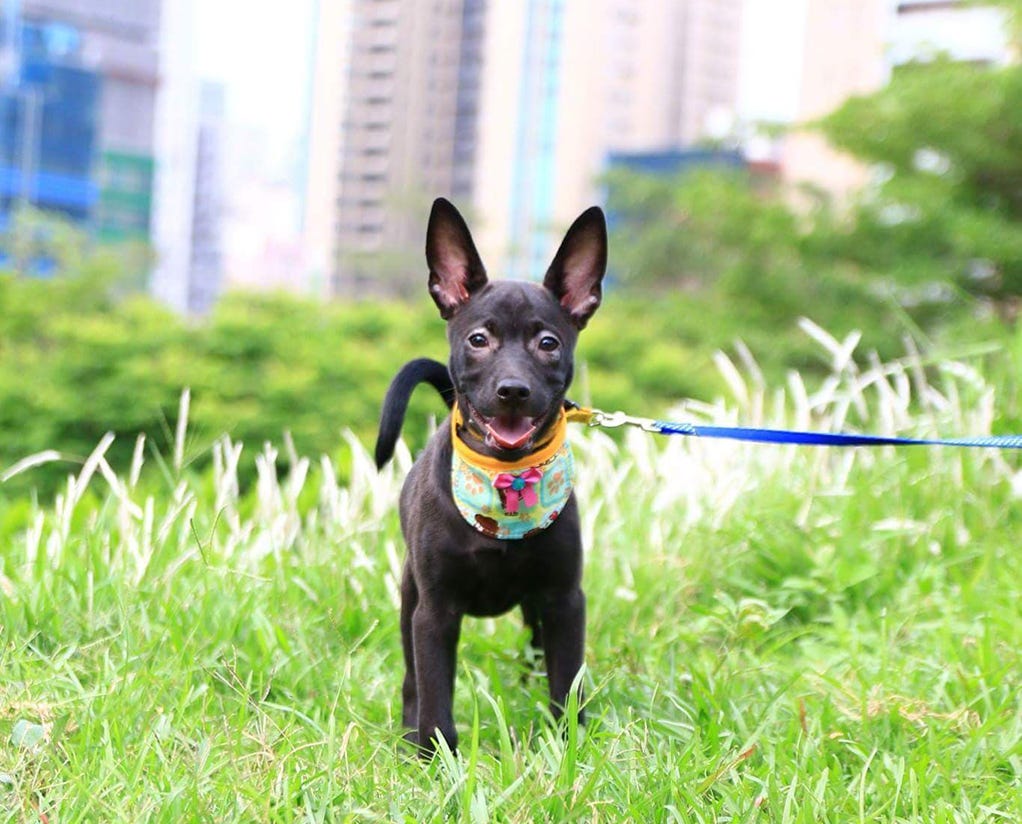
The text next to the headshot of a black puppy with enormous bat ears read: “Misty and her brothers and sisters were born on side of mountain in central Taiwan. Her mother had no home but tried to care for her 7 puppies but hurricane destroyed their nest and her puppies were washed down hill into ditch where they were attacked by another dog. A kind-hearted lady happened to come by and rescued her puppies.”
A year after we adopted Misty, now named Aster, we connected with her original rescuer and foster, and confirmed our suspicion that, other than birth and rescue, everything in between was pure fiction–no hurricane, no ditch, no attack. In truth, each of the dogs up for adoption through the all foster-based animal rescue organization all had such fantastically pitiable origin stories that any reader would recognize them to be myth-making but for the universal truth that life is precarious and fragile, and story-telling is how survivors give us hope. (Let me add that we believe the “drama” was added only because that litter was cared for very early on, even while the mama was pregnant but feral. I don’t think there were any unethical intentions in “embroidering” the story in this case.)
In truth, each of the dogs up for adoption through the all foster-based animal rescue organization all had such fantastically pitiable origin stories that any reader would recognize them to be myth-making but for the universal truth that life is precarious and fragile, and story-telling is how survivors give us hope.
I stumbled onto international pet adoption when I could not find a medium sized dog from local shelters, a dog that I could go hiking with but can still pick up and carry in an emergency. On petfinders.com, I entered my preferences–a short haired, 35-40lb dog–and up came all these dogs from Taiwan and other countries. I was intrigued. I learned of several organizations who brought dogs in from Asia, some rescued from meat trades, some from kill shelters, and from Taiwan, Tugous or Earth Dogs–indigenous dogs–due to habitat loss and increasing motorized traffic even in remote areas.
My husband wasn’t surprised when we sat down for dinner one evening at our local Italian eatery and without preamble, I whipped out my phone and showed him a picture of “Misty.” “what do you think of her?” “Um…ok…” “We have to pick her up in San Francisco.” “Um…I like that drive.” He said he was surprised that I waited that long to spring a dog on him. 25 years.
International pet adoption turned out to be a long and involved process and part way through, I seriously wondered if it wasn’t all a scam: we had to send videos of all current members of the family, pets, a house walk-through, and a yard walk-through to the organization that managed the process. After all the paperwork and the videos, there was a phone interview to clarify what they saw in the videos, and I wasn’t sure they were satisfied with my responses.
Finally, we had a date, a flight number, and instructions on how to handle our new pup! We made hotel reservations and arranged for a cat sitter, but I wasn’t completely convinced that we would pick up a dog at SFO until the crates were pulled into arrival hall. Seventeen Tugous arrived on that flight that night.
For millennia, dogs have spread throughout the globe mostly mirroring human’s migrations by land or by sea, and now they continue to follow us by air. And poor Laika aside, who died alone and terrified in an involuntary suicide mission into space, they will undoubtedly come with us when and if we venture out en masse in the future.
For millennia, dogs have spread throughout the globe mostly mirroring human’s migrations by land or by sea, and now they continue to follow us by air.
Colloquially called Tugou in Taiwan and Formosan Mountain Dog (FMD) everywhere else, the dog is known as East Asian Village Dog (EAVD) by canine geneticists. The original indigenous Tugou, however, is considered extinct or extirpated. Most of today’s FMDs are crosses of imported breeds with Tugous that formerly reached northern Taiwan with the arrival of the pre-Austronesian peoples from southern coastal China, sometime 10,000 to 4000 years ago. Over the next 2000 years, these first Austronesian peoples and their animals spread through Taiwan, practicing diverse subsistence strategies of hunting, foraging, fishing, and mixed rice and millet farming depending on local environment and ecology.
(In this previous post, I mention the different theories on the where & when of domestication of dogs, but whichever theory is eventually proven correct, dogs had reached the southern coast of China to make the crossing to Taiwan with the pre-Austronesian peoples.)
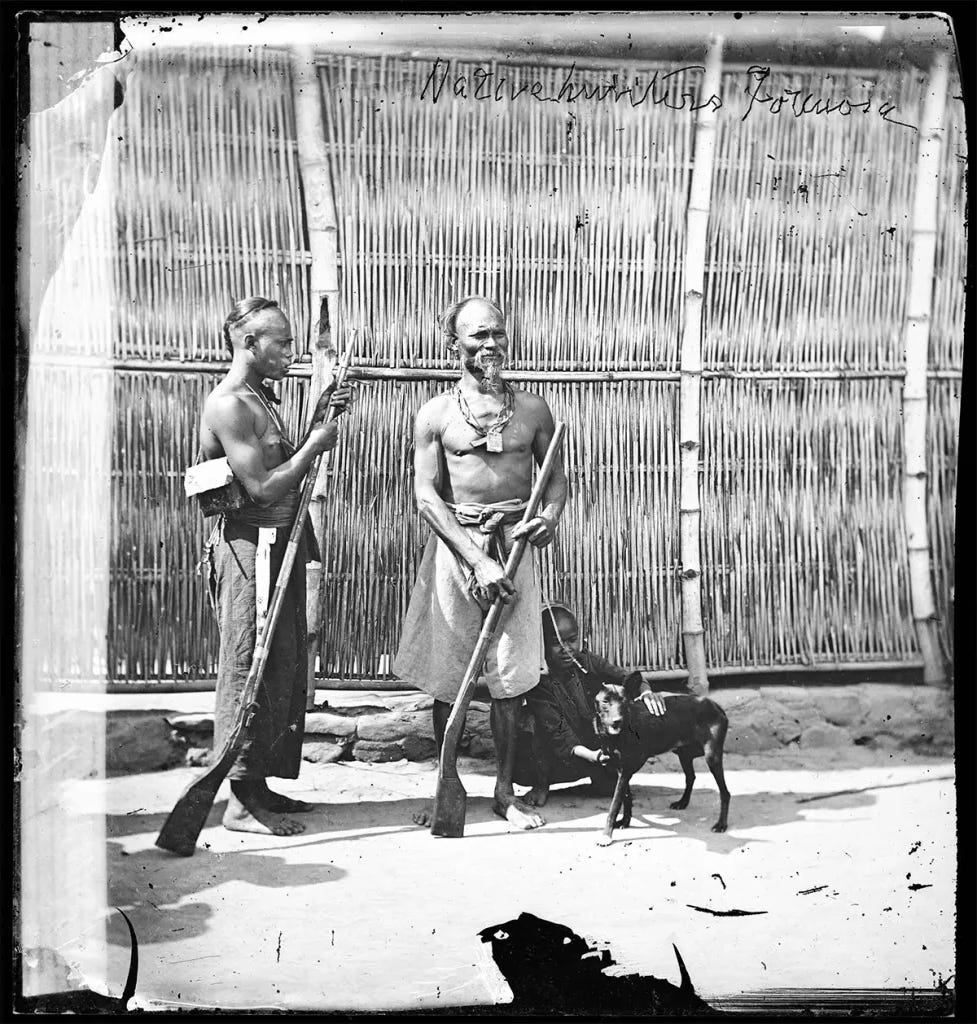
In south Taiwan, these early Austronesians started to develop their extraordinary sea-faring technologies that ultimately enabled them to set out for Luzon, Philippines, and eventually reach and settle as far west to Madagascar, east to Rapanui (Easter Island), south to New Zealand, and all other islands in between, excluding Australia. Using sails, outrigger canoes, and catamarans, the Austronesian Expansion was the largest mass migration in geographical extent until the European colonial expansion starting in the late 1400s. (The “Austro” in both “Austronesia” and “Australia” comes from the Latin “auster” for “south wind, south country.”) (Also, this is the simple version of the Out of Taiwan model of the Austronesian Expansion; recent genomic studies mostly corroborate the broad outlines of the theory but paint a more complex and fragmented pattern of migrations.)
I am sometimes asked if Aster is a dingo and, except for her coloring and curly tail, she does share the dingo’s looks, speed, agility, and stamina. There are several studies that found connections between dingos and various dogs of the Pacific and SE Asia, but there isn’t a settled theory on their migration and kinship. (Here are a few different papers focussing on canine genetics dated 2018, 2020, 2023.)
I am sometimes asked if Aster is a dingo and, except for her coloring and curly tail, she does share the dingo’s looks, speed, agility, and stamina.
Circling back to how today’s FMDs are mostly crosses of imported breeds with Tugous–of the hundreds of FMDs genetically tested by Embark, the only canine genetic test company that tests for primitive dog or village dog ancestry, Aster is one of only twelve FMDs that show no traces of foreign breeds (as of this writing). But compared to Tugous in historic photographs, Aster is taller, her ears stand more vertically, and her tail is curly. So as testing capabilities expand, we hope to learn more of her ancestry, and we may also gain more insights into the history and relationships of various village dogs of the Pacific islands, SE Asia, and dingos of Australia.
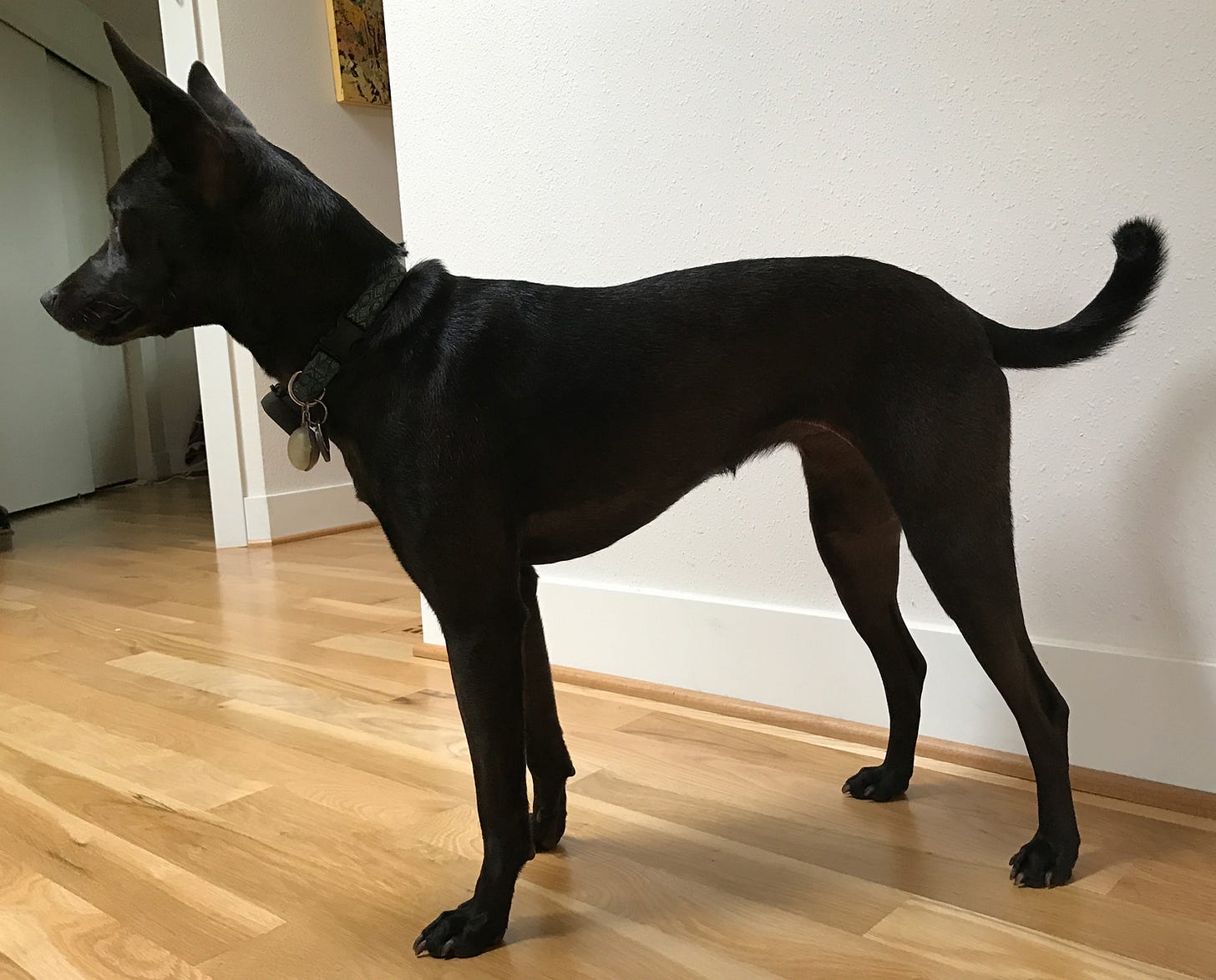
In the last few decades, there had been a conservation effort to bring the indigenous dog back from the brink. After a massive search, only 46 dogs were deemed “pure” enough and a breeding program was established. In the late 80s, my parents had an unaltered female Tugou, Heinio (photo below), and a breeder came to see her; but she was rejected due to her curly tail and a slight bent to her ears. As a result of the breeding program, the Taiwan Dog is now an officially recognized dog breed by various international organizations, including American Kennel Club.



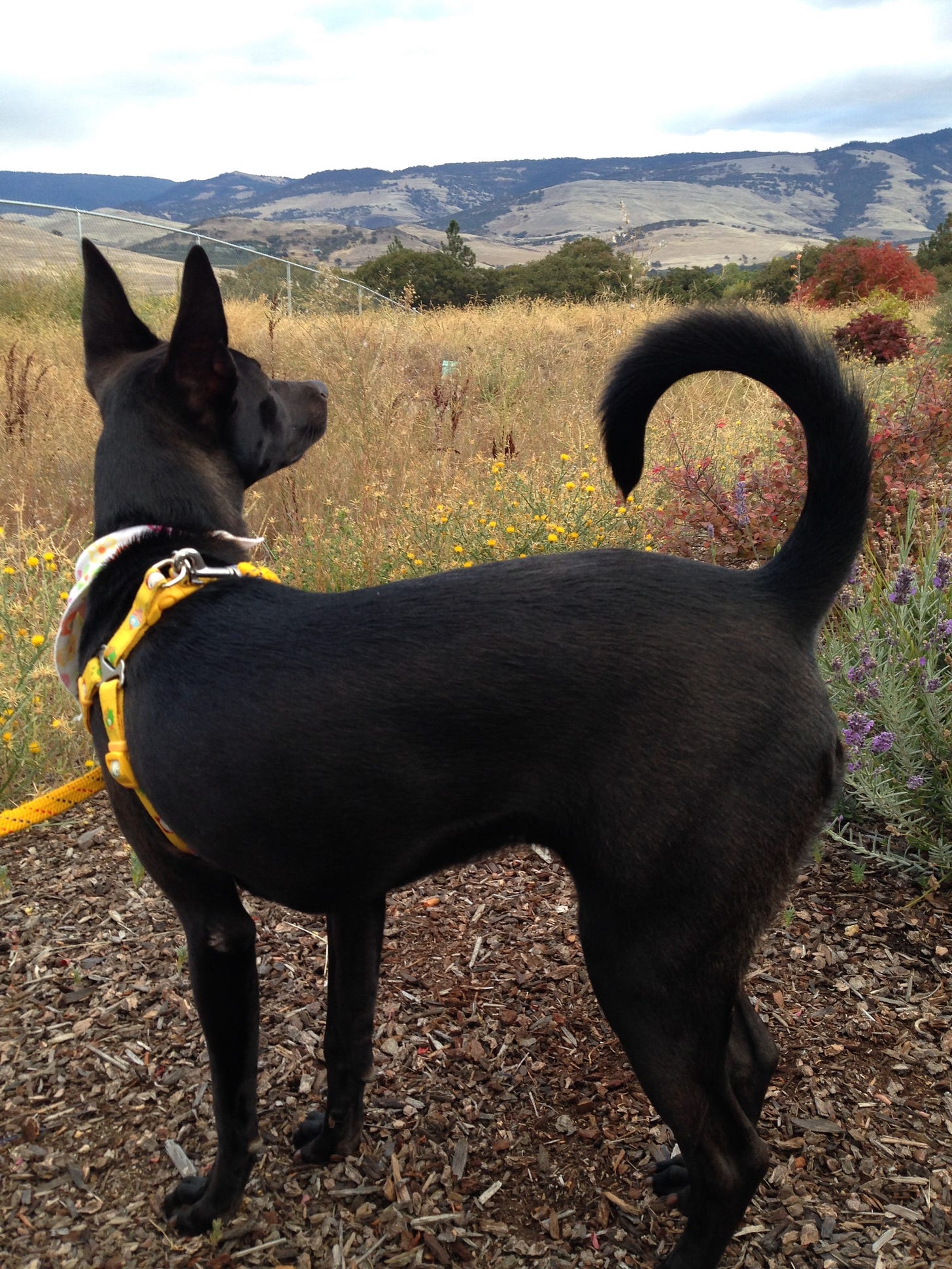
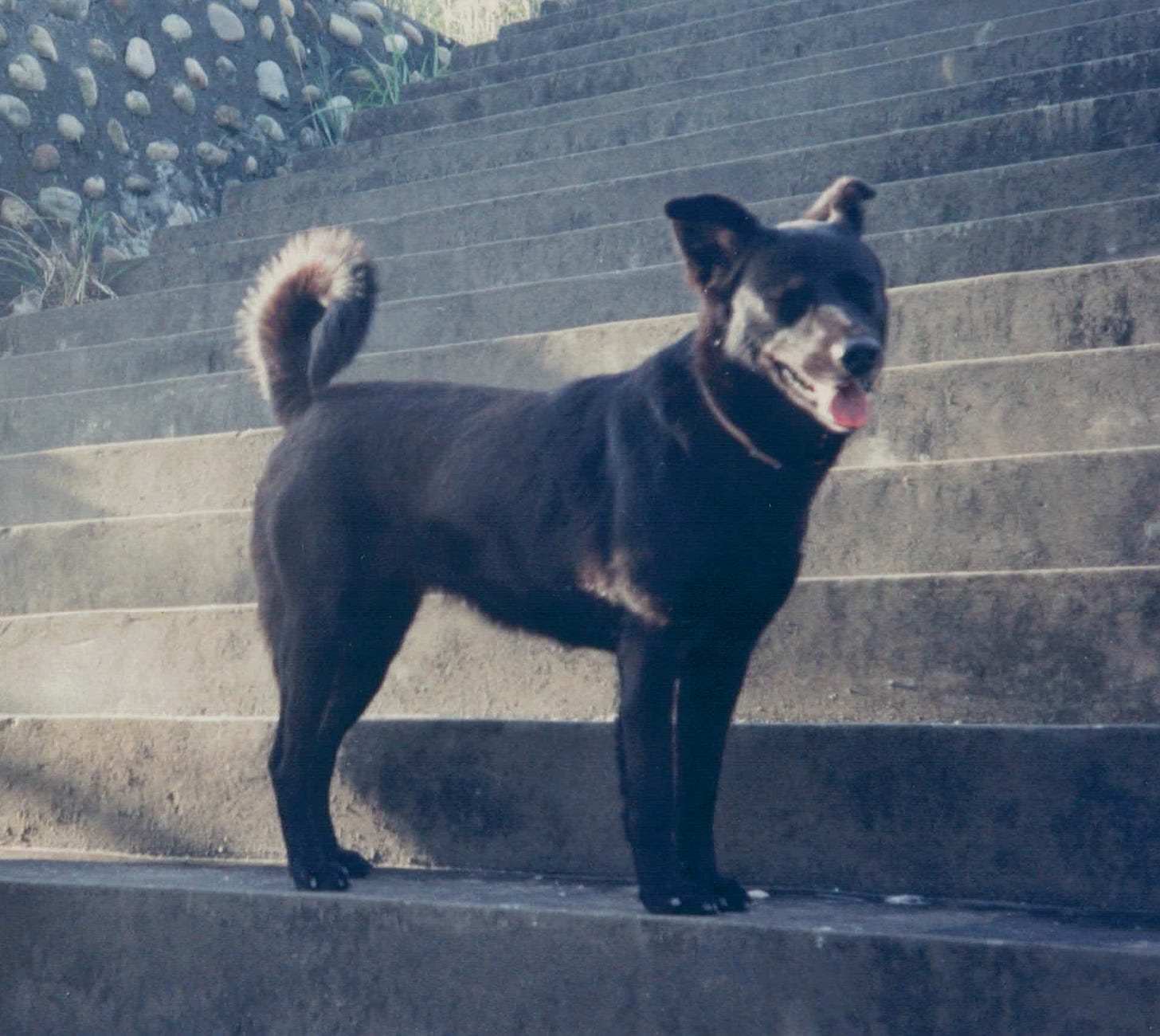
I love that Aster comes with her own origin myth! This is wonderful, I'm really enjoying this rounding out of her story with history and research.